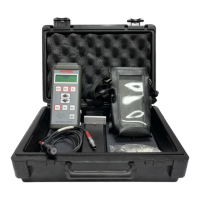1.1 Important notes
GE Inspection Technologies Operating manuals pro-
vide functional information about a particular instru-
ment or group of instruments. However, proper set-
up and use of this equipment and the performance of
electromagnetic tests requires familiarity with factors
which are beyond the scope of Operating manuals.
These factors include the following:
• Selection of appropriate cables, probes, fi xtures,
mechanical handling equipment and other accesso-
ries.
• Selection of proper test frequency, test mode and
other test parameters.
• Preparation of the test surface.
• Characteristics of the test material for example: con-
ductivity, hardness, permeability, geometry, magnet-
ic properties, heat treatment etc.
• Environmental factors such as temperature humid-
ity, dust and electrical interference.
• Any individual factors that will depend on the partic-
ular test object or test being performed.
It is therefore imperative that operators are properly
trained in both general procedure for electromagnetic
training testing and in the set up and execution of the
particular test to be performed. It is the responsibility
of the instrument user to ensure that test operators are
trained to a suffi ciently high standard, suitable equip-
ment is used in the correct manner and that any test
variables which may affect specifi c tests are taken into
account. Similarly, compliance with standards such as
ASTM, ASNT, API, ASME, BS etc., as well as the ob-
servance of any test procedure specifi ed by any gov-
ernment, manufacturer or other regulating authority is
the responsibility of the user.
Periodic calibration, cleaning and maintenance may
be necessary to ensure proper operation of the equip-
ment.
Environmental conditions and regularity of use should
be considered when determining the frequency of
such checks, then this should be observed.
Incidents such as physical shock, immersion in liquid
and exposure to damaging environments such as ex-
cessive heat, moisture, dirt or dust can adversely af-
fect equipment performance. The equipment must be
Important notes
Introduction
1 - 2
Issue 04, 06/2007 AutoSigma 3000

